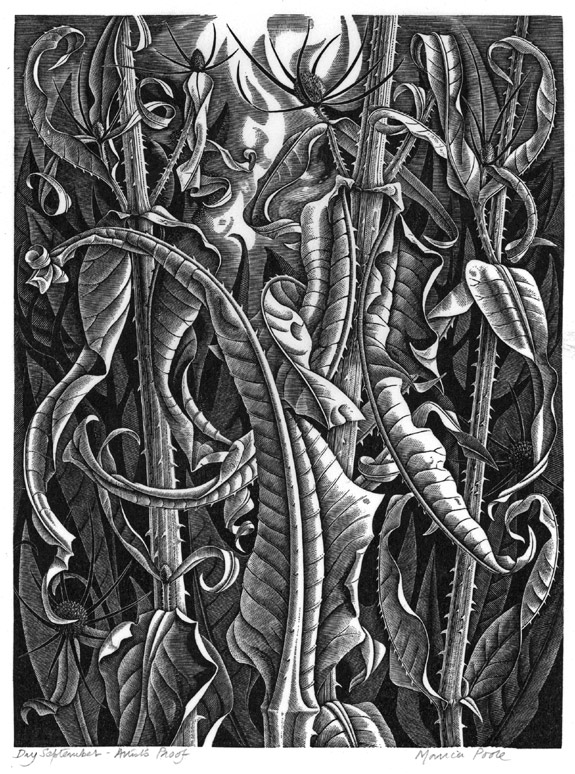|
MONICA POOLE R.E., S.W.E.
(Canterbury 1921 – 2003 Tonbridge)
Dry September

Dry September
Ref: Ashmolean exhibition catalogue 41
199 x 148 mm
Original wood engraving, 1980.
An artist’s proof.
(The edition was 75.)
Sold
To view a higher resolution version of this print, please click this link: Dry September
|
|
Additional
Information about the Print
Monica Poole found her inspiration in natural forms sculpted by weather,
age or decay, encountered in the local Kent landscape, shoreline or her garden.
She observed ...
“ I find that the most enjoyable moment in making a print is when one
finds an interesting subject that demands to be engraved.”
“ I do not want to portray emotion and incident, to comment on human situations
or to create ideas…the starting point of all my work is visual.”
Wood engraving is a relief printing process, the ink being transferred
from the surface of the block in printing.
Whereas woodcut generally creates a black line (and is printed from
a plank cut following the grain of the tree), wood engraving results
in a white line.
The artist cuts the design with a burin into the surface of a boxwood
block, which has been cut ‘end-grain’ (that is against/crossing the grain)
to achieve a really hard surface.
Ink is applied to the surface but does not go into the engraved lines,
so that in the resulting impression the lines ‘print’ as ‘white’; actually
the natural white of the paper showing against the printed black ground.
Wood engravings can be printed on a platen press, but also by hand
pressure, placing damp paper over the inked block and rubbing with the
back of a spoon.
For more information, and further examples of wood engravings and Relief forms of printmaking, please explore the Wood Engraving pages in the Techniques section of this website. |